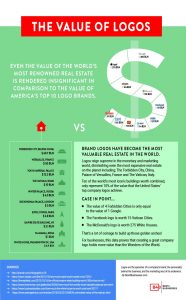— March 7, 2019
Technology has vastly changed all aspects of our lives, particularly the workplace. Web conferencing, Skype, the cloud, and even the introduction of virtual reality in the enterprise – the list of changes is significant. But there are other technological tools companies are beginning to use remodel the workplace and the notion of the workday, while improving productivity and employee satisfaction.
In 2019, there are five changes in work as we know it that can better the workplace and which can be enabled by today’s digital workplace technology:
- People should be allowed to work remotely.
According to recent US Census, 3.7 million employees already work from home, and regular telecommuting has grown 115% since 2005. Per Gallup’s State of American Workplace, 53% of employees say a role that allows them to have greater work-life balance and better wellbeing is important to them, and 51% of employees say, if the option presents itself, they’ll switch to a job that allows them to work from home, while 37% say they’ll switch to a job that allows them to work off-site at least part of the time. While some employers are still uneasy about ushering in work-from-home scenarios, data proves work-from-home productivity loss is unsubstantiated. After analyzing +500,000 hours of data around work trends and patterns, we found work-from-home employees spend on average 2 more hours per day working on projects than their work-in-office counterparts. And work-from-home employees spend +1.8 hours/day more focused ‘core time’ per day as compared to their work-in-office colleagues. This is substantiated by stats from the Society for Human Resources Management (SHRM), where employees working remotely at least part-time report 77 percent greater productivity while working off-site. Also, workers who spent 60-80 percent of their time away from the job site report the highest rates of engagement. - Managers should run teams based on data and not assumptions.
Being data-driven enables you to effectively gauge how things are going and separate wrong assumptions from right ones. Sometimes numbers-driven managers end up touting lots of low-quality data or attempt to “game” numbers. However, managers should use data to measure what they manage, and vice versa. Newer technological tools can help you establish key performance indicators and see if teams and employees are meeting them. - Time cards or concept of time in office should go away.
We should not be asking employees to measure or clock in how much time they spend at work. Let’s face it – people who clock in are not necessarily more productive during the day. Some studies actually suggest that the average worker is productive less than half the day. One study shows that working fewer hours and feeling supported at work can boost productivity. It is time spent doing core work and getting it done that really matters. If someone gets things done hours early to hit the ski slopes or attend a kid’s Little League game, why should the ticking clock make them stay at work? - Introduce flexible work hours.
This gives employees freedom, but with accountability. Flexible work schedules help attract employees and retain them. Furthermore, permitting people to work when they feel freshest, most productive and enjoy working allows them to focus on meeting deadlines and producing good work. Several studies have shown flexible schedules lead to reductions in absenteeism, lower turnover, better results and happier employees. One study conducted by the MIT Sloan School of Management, American Sociological Association, and the American Sociological Review at a Fortune 500 company showed that flexible work schedules are beneficial and not detrimental to firms. - Empower employees to self-manage and become successful on their own.
This involves using a positive combination of performance data and freedom to keep individuals apprised about their performance and areas in which to self-improve. This would clearly enable many firms to stop their annual appraisal processes. Organizations have to invest in technology that provides constant performance data to employees along with suggestions for changes so that they can self-improve and measure their progress.
Today, more people shop remotely, watch movies or TV shows when they want, wear a Fitbit to promote their health and use other technological advances to make their nonwork lives more productive and satisfying. It is time to use technology to transform work further. Today’s digital productivity tools – such as advanced people analytics can review and compare work patterns off-site as well as on, and measure effort and workers’ output. These tools can support the five changes presented here to renovate the concept of a workday and workplace.
A version of this post originally appeared here.
Business & Finance Articles on Business 2 Community
(36)





